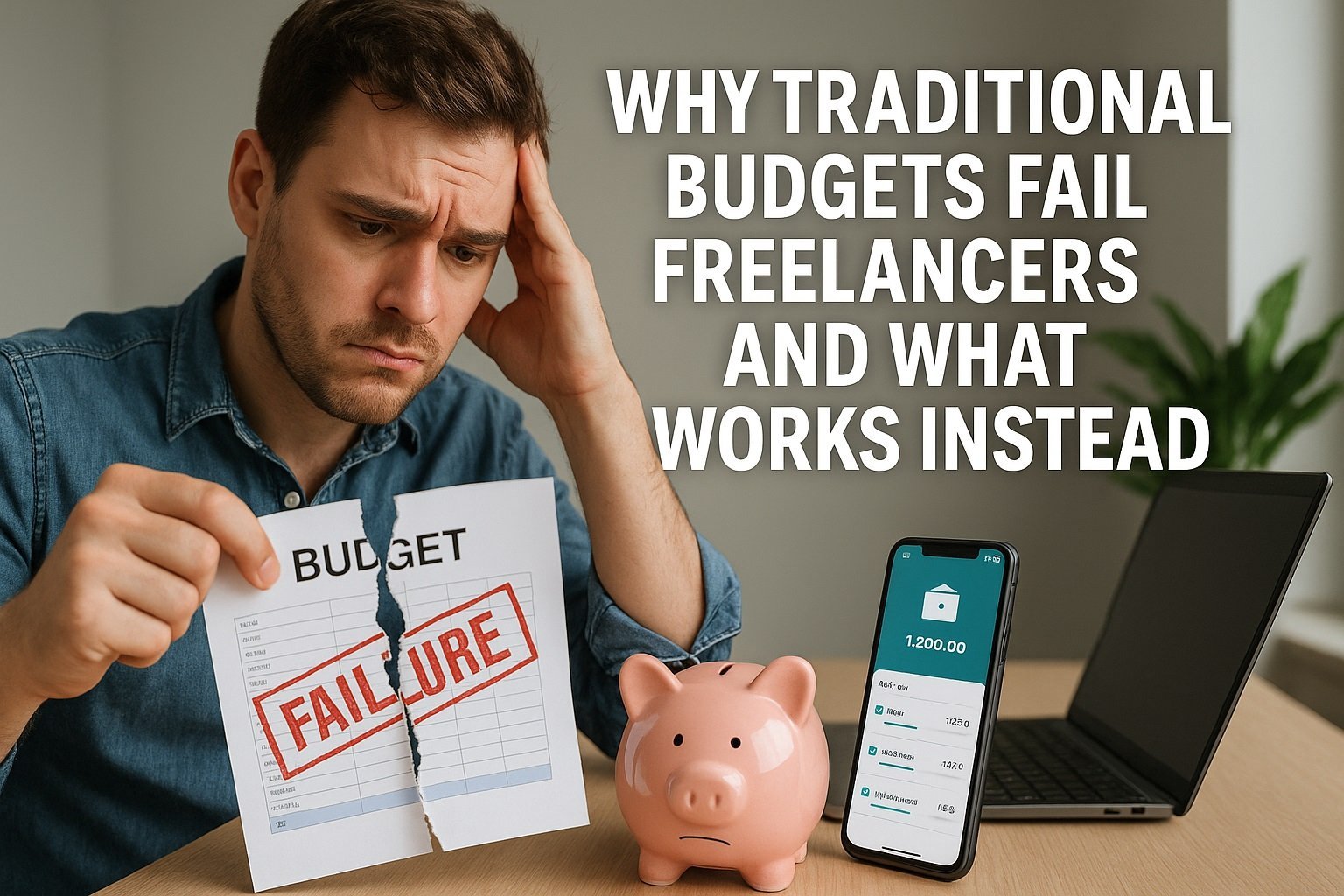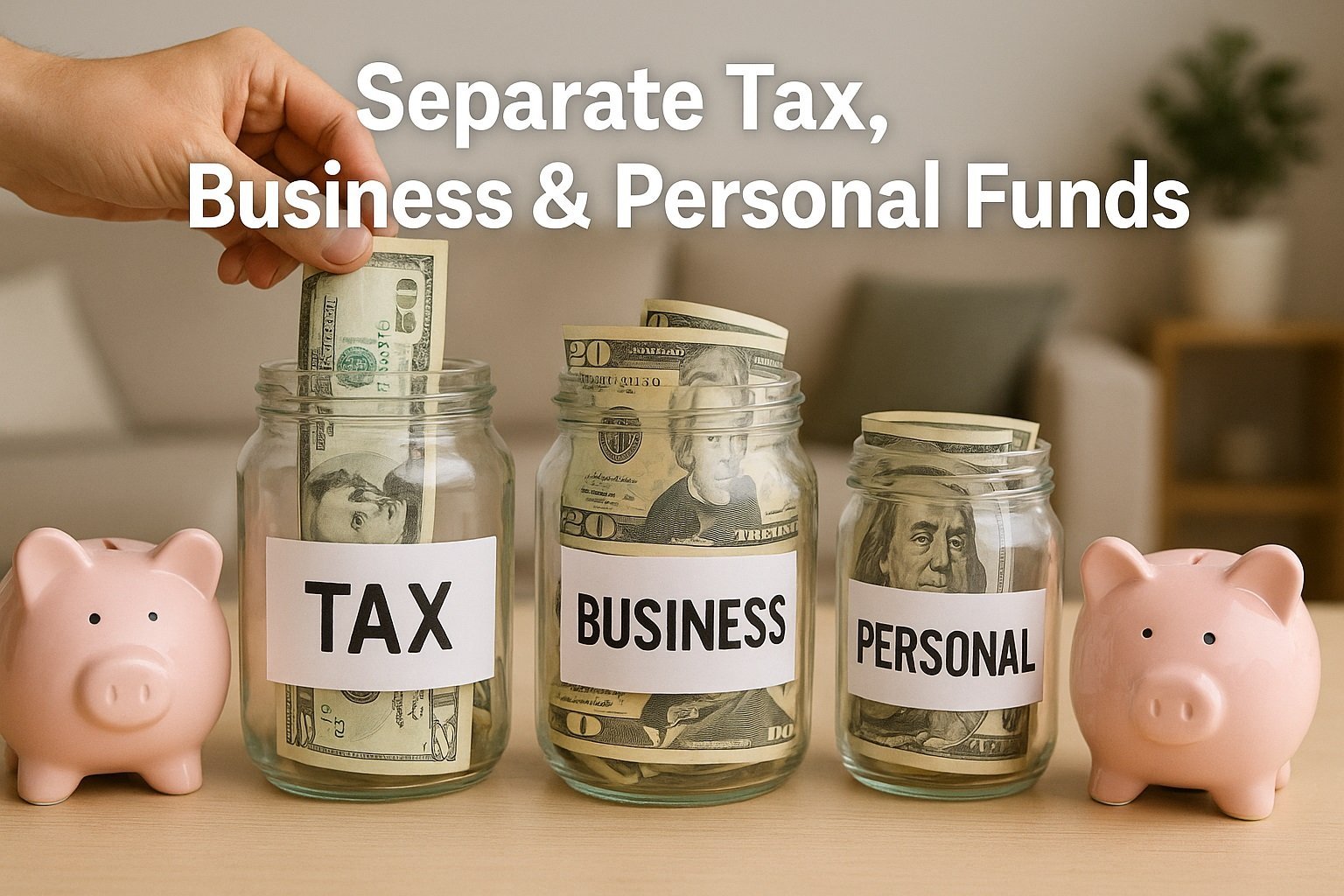Irregular income means earnings that ebb and flow – project fees, commissions or gig pay that arrive in different amounts and at unpredictable times. Smart spending is about making every dollar count by directing money toward your priorities rather than reacting to whatever lands in your account. When you tie your outflows to a clear plan, you avoid scrambling to cover rent or groceries when the next pay cheque is late. In this article, you’ll discover a straightforward, step-by-step framework used by top personal finance experts to stay solvent in lean seasons and supercharge your savings in busy ones. You’ll learn how to build a buffer that cushions surprises, allocate cash intentionally, and keep yourself on track without resorting to rigid forecasts that break when income shifts. By the end, you’ll have concrete tactics you can apply today to smooth out highs and lows and finally ditch money stress for good.
Why Traditional Budgets Fail Freelancers and What Works Instead

Most budgets start by projecting every expense for the month and matching it to expected income. That method works when paycheques arrive like clockwork, but for freelancers it can backfire: one missed invoice throws the whole plan off track. Rather than forecasting every cent before you’ve earned it, a more reliable approach focuses on the cash you actually have today and builds a small buffer of reserved funds for tomorrow.
With a zero-based, cash-on-hand plan, you assign every dollar in your account to a specific purpose – essentials, buffer or discretionary spending – so nothing is left unallocated. Then you maintain a rolling buffer equal to one to two weeks of living costs, replenishing it whenever income exceeds your current buffer goal. This simple shift from predicted to actual cash flow keeps you covered even when payments run late.
| Traditional Budget | Cash-On-Hand Plan |
|---|---|
| Forecast heavy and inflexible | Based on actual balance today |
| Breaks if income is delayed | Buffer cushions timing gaps |
| Hard to adjust mid-month | Reallocations happen every payday |
| No built-in reserve | Explicit buffer for lean days |
Step 1 – Tally Your Minimum Reliable Income
First things first: figure out the smallest amount you can count on in any given month. Dig into your records for the past 12 months and spot the lowest-earning month. If you’re just starting out and don’t have a full year of history, pick a conservative figure that feels realistic based on your current gigs or contracts. That number becomes your “floor” or minimum reliable income; you know that even in a slow month, you should bring in at least this much after taxes.
Treat everything above that floor as surplus cash. By separating your core living expenses from windfalls, you’ll prevent lean periods from derailing your essentials. If you bank $3,000 this month but your floor is $2,000, you immediately set aside $1,000 to allocate later toward savings, debt payoff or extra buffer top-ups.

Quick-calc options
There are a couple of simple ways to pin down your floor without getting lost in spreadsheets:
-
12-month lowest
Look back over the past year and identify your single smallest net income month. Subtract estimated taxes so you’re working with after-tax figures. -
3-month rolling average
Add up your net income for the last three months and divide by three. This smooths out one-off spikes or dips but still gives you a conservative baseline.
| Method | How to Calculate | Pros | Cons |
|---|---|---|---|
| 12-Month Lowest | Lowest monthly net income in past 12 months | Guarantees coverage even in worst dip | Might be overly conservative |
| 3-Month Rolling Average | (Monthₙ + Monthₙ₋₁ + Monthₙ₋₂) ÷ 3 | Balances highs and lows | May not protect against sudden drops |
Regardless of which approach you choose, always work with after-tax numbers so you don’t accidentally overspend. Once your floor is locked in, you can confidently give every extra dollar a purpose.
Step 2 – Rank Expenses in Survival → Comfort → Growth Layers
Now that you know your income floor, it’s time to organise your outflows into three clear tiers: Survival, Comfort and Growth. Think of it as your personal spending pyramid. At the base lie the truly non-negotiable costs you need to keep a roof over your head and meals on the table; above that sit the things that make life easier but aren’t critical in a pinch; and at the top are investments in your future and personal development.

-
Survival (The Four Walls)
These are the essentials you can’t skip: rent or mortgage, groceries, utilities and transportation. Without these, everything else falls apart. -
Comfort
Next up are expenses that protect you and enhance daily life: health or renters insurance, necessary subscriptions (think cloud backup or antivirus), and childcare or eldercare if you rely on it. -
Growth
Finally, allocate funds toward long-term goals: retirement contributions, professional tools or software that boost your income potential, and even the occasional work-related travel or conference.
Priority-pay checklist
Keep a simple list of each bill’s due date alongside an “importance” score (1 = must pay now, 5 = can delay briefly). This visual nudge prevents accidental late fees and ensures you’re funding survival costs first, then comfort, then growth when cash allows.
| Expense Category | Example Item | Due Date | Importance Score |
|---|---|---|---|
| Survival | Rent/Mortgage | 1st | 1 |
| Survival | Electricity | 15th | 1 |
| Comfort | Health Insurance | 10th | 2 |
| Comfort | Streaming Service | 20th | 4 |
| Growth | IRA Contribution | 25th | 3 |
| Growth | Professional Course | Flexible | 5 |
With this checklist, you’ll see at a glance which bills demand immediate attention and which can wait until surplus cash is available. Adjust scores as your priorities shift, and you’ll always know exactly what to pay and when.
Step 3 – Build a 4-Month Buffer Before Splurging
Think of this buffer as your routine “rainy-day” stash, separate from a true emergency fund that covers major shocks like medical bills or car repairs. Its sole purpose is to smooth out those predictable dry spells when gigs slow down or invoices run late.
Start by calculating your average monthly spend across essentials and comfort-tier bills. Multiply that number by four, and you’ve got your buffer target. For example, if you typically spend ₹50,000 a month on housing, food, utilities and must-have subscriptions, aim to save ₹200,000 in this dedicated account.
Every month, treat all surplus cash above your income floor as fuel for this buffer. Even small amounts add up: a ₹5,000 extra invoice or an underspend on groceries goes straight into the buffer until you hit your 4× goal. Once you’ve reached full funding, you can confidently redirect surplus dollars toward growth like retirement savings or professional development without worrying that the next slow patch will leave you scrambling.
By front-loading this habit, you create a built-in safety net that keeps you sailing smoothly through the feast-or-famine cycle.
Step 5 – Automate Percentage-Based Buckets
Once your buffer is humming along, take the guesswork out of saving and spending by automating your cash flow into set buckets. A freelancer-friendly spin on the classic 50/30/20 rule works like this:
-
50% Needs – Housing, groceries, utilities, transport and other survival-layer costs.
-
30% Wants – Comfort-layer expenses such as insurance add-ons, subscriptions or a treat-yourself coffee.
-
20% Buffer + Goals – Top up your routine buffer or funnel money toward growth objectives like retirement or professional courses.
Set up automatic transfers on payday so each incoming payment is divvied up immediately. You’ll never wonder where your money went. Each bucket fills itself without manual effort.
| Bucket | Percentage of Income | Example Uses |
|---|---|---|
| Needs | 50% | Rent, utilities, groceries, transport |
| Wants | 30% | Streaming, dining out, non-essential shopping |
| Buffer + Goals | 20% | 4-month buffer top-up, investments, debt payoff |
If you prefer a zero-based approach, tools like YNAB or EveryDollar let you assign every rupee a job before it lands in your account. Either way, automation prevents impulse overspending and keeps your plan on track even when life gets busy.
Step 6 – Track & Tweak Weekly
Make it a habit to log every expense as soon as it leaves your account. Whether it’s a cup of chai or a software subscription, noting the date, category and amount keeps your plan grounded in reality. At the end of each week, compare your actual spending against your buckets – Survival, Comfort and Growth – or your percentage-based targets. When you see overshoots, tweak upcoming allocations: maybe trim a Comfort splurge or pause a subscription until your buffer is back on track.
To keep this from feeling like a chore, schedule a quick 15-minute “money date” every Friday. Grab a coffee, open your expense log or budgeting app, and ask yourself two questions:
-
Did any category drift from the plan?
-
What adjustment can I make next week to stay on course?
| Date | Category | Planned ₹ | Actual ₹ | Variance ₹ |
|---|---|---|---|---|
| 2025-06-13 | Groceries | 8,000 | 9,200 | +1,200 |
| 2025-06-13 | Subscriptions | 2,000 | 1,800 | –200 |
| 2025-06-13 | Buffer Top-up | 5,000 | 5,000 | 0 |
Over time, these small Friday check-ins sharpen your awareness of spending patterns and give you the power to adjust before a minor slip becomes a big setback. By tracking and tweaking weekly, you’ll keep your irregular income plan resilient and stress-free.
Step 7 – Separate Tax, Business & Personal Funds

Keeping your taxes, business expenses and personal spending in one pot is a recipe for confusion and last-minute scrambles. Instead, open a dedicated high-yield savings account just for taxes and set up an automatic transfer of 25–30% from every incoming payment. That way, you never dip into what’s owed, and you still earn a bit of interest while it sits untouched.
Next, use your main checking account for everyday personal expenses: rent, groceries and whatever else you treat yourself to. Finally, maintain a separate business-operating account for software subscriptions, equipment purchases and any other professional costs. By earmarking each rupee up front, you’ll always know exactly how much you have to spend versus set aside.
| Account Type | Purpose | Recommended Percentage |
|---|---|---|
| Tax Savings (high-yield) | Income tax, self-employment contributions | 25 – 30 % |
| Business-Ops Checking | Tools, subscriptions, equipment | Varies by month |
| Personal Checking | Housing, food, transport, fun | Remainder |
Automating these transfers takes the emotion out of money management. As soon as a client payment hits your account, your tax bucket grows automatically, your business account stays funded and your personal balance is what’s truly yours to enjoy. No surprises, no scrambling come tax season – just clarity and control over every rupee.
Step 7 – Separate Tax, Business & Personal Funds
Mixing taxes, business costs and personal spending in one account can lead to confusion and last-minute scrambles. The easiest fix is to open a dedicated high-yield savings account and set up an automatic transfer of 25–30% from every client payment into it for taxes. This ensures you never touch what’s owed and even earn a bit of interest while it sits there.
Next, keep your everyday personal expenses – rent, groceries and treats – in your main checking account. Finally, maintain a separate business-operating account for software subscriptions, equipment purchases and other professional bills. By earmarking each rupee up front, you always know exactly how much is safe to spend personally, how much you’ll owe in taxes and which funds are reserved for keeping your business running smoothly.
| Account Type | Purpose | Auto-Transfer Amount |
|---|---|---|
| Tax Savings (high-yield) | Income tax and self-employment contributions | 25–30% of each payment |
| Business-Ops Checking | Tools, subscriptions, equipment | Varies by month |
| Personal Checking | Housing, food, transport, fun | Remainder |
Automating these buckets removes the guesswork and guards against year-end surprises. When a payment arrives, your tax pot grows, your business account stays funded and your personal balance is clear.
Recommended Tools & Apps
When you apply these strategies, the right tools can make setup and maintenance a breeze:
| Purpose | Tool | Why It Helps |
|---|---|---|
| Zero-based budgeting | YNAB | Gives every dollar a job and adapts on the fly |
| Fast envelope planning | EveryDollar | Drag-and-drop categories on iOS/Android |
| Mileage & receipts tracking | Expensify or Bonsai | Separates and logs deductible business costs |
FAQ – Targeting “People Also Ask” Queries
How do you budget when your income is inconsistent?
Base your plan on the lowest month you’ve earned, then update weekly as cash actually arrives.
How much should freelancers set aside for taxes?
Move 25–30% of each payment into a separate savings account to cover federal, state and self-employment taxes. (Consult a CPA for your exact bracket.)
What percentage of irregular income should go to savings?
After covering essentials, funnel the first 20% into a 3- to 6-month emergency fund, then toward long-term goals. In high-earning months, consider boosting that rate instead of increasing spending.
Is the 50/30/20 rule good for freelancers?
Absolutely, as long as you treat the 50% “needs” slice as your minimum-income baseline and keep the 30% “wants” flexible.
How big should an emergency fund be for freelancers?
Aim for 6 – 12 months of bare-bones costs, since contract gaps often last longer than traditional job layoffs.

